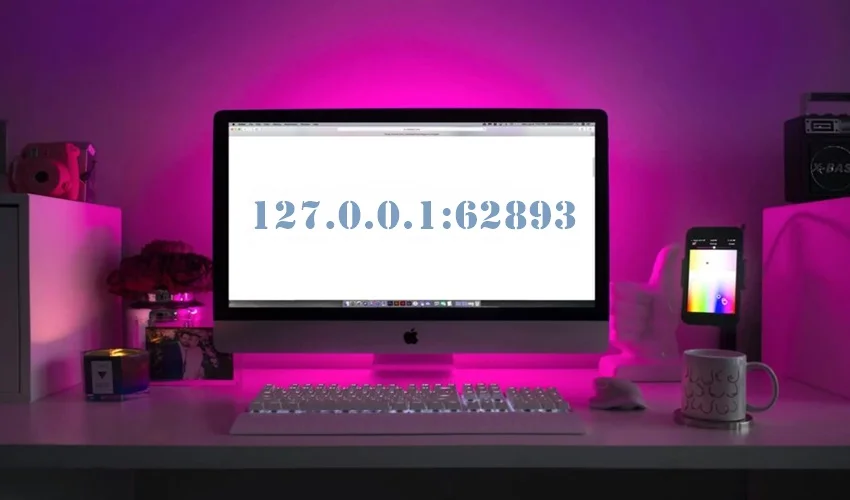Some computing terms and concepts are still confusing to many. On a computer screen, you may see 127.0.0.1:62893. Even though it sounds unclear, this word is crucial in networking and server settings. This guide simplifies and emphasises the need of this IP address for localhost.
What are IP Addresses?
Understanding “127.0.0.1:62893” requires knowledge of IP numbers, or “Internet Protocols.” Each networked machine has an IP address. It helps devices find and communicate. There are two main IP address types:
IPv4: IPv4 has 32 bits and four digits between them, as 192.168.1.1.
IPv6: We can write IPv6 in hexadecimal with eight groups of four numbers. This type is 128-bit.
The host and network parts of an IP address describe a device and network, respectively.
IPv4 vs. IPv6
You need more IP addresses, hence IPv4 to IPv6 is a step. IPv4’s 32-bit format enables just 4.3 billion unique addresses, not enough for the exponential increase of internet-connected devices. IPv6’s 128-bit format provides more addresses to handle the increasing digital world.
Deciphering 127.0.0.1:62893
The computer IP address “127.0.0.1” is crucial. You can call it “localhost” or “loopback address.” This is your computer’s IP address. The device can connect to services or apps on the same device when paired with “62893.” This pairing facilitates app communication without network connections.
Setting up operations on localhost
If you want to use localhost, do these things:
Install Server Software
You can put server software on your computer, like Nginx, Apache, or IIS. With this software, you can run websites and apps on your own computer.
Nginx: People know Nginx for how fast it works and how few resources it uses.
Apache: Apache is a web server that is very flexible and widely used by web developers.
IIS: Built into Windows so it works with all other Microsoft services without any problems.
Configure Server
Set up the server software to work on port 62893 so that contacts can come in. To do this, you need to change the server’s configuration files so that they listen for calls on this port. Different sites have different configuration files, but most of them include the port number and directory paths.
Set Up Directories
Make the file folders that the server needs and make sure it can read and write to them. For the server to serve the content properly, this is very important. Setting up a group correctly includes:
Making sure the right powers are in place.
Putting together directories so they are easy to use and control.
Not letting anyone else view sensitive files by locking them down.
Verify Configuration
Use the address “127.0.0.1:62893” to get to your website or app and check the server settings. Make sure that when requests come in on this port, the server responds properly. You can test this with web browsers, command-line tools like Curl, or special apps.
Use Virtualization Software
Set up port 62893 for networking and communication and use software like Docker or VirtualBox to make and handle virtualized environments for virtual machines.
Docker: Docker lets you put apps inside containers, which makes sure they run the same way in all settings.
VirtualBox: VirtualBox lets you make multiple virtual machines, each with its own set of network settings.
Troubleshooting Common Issues
You might have some problems when you work with port 62893 and localhost. Here are some usual ways to fix problems:
Verify TCP/IP Settings
If you want to communicate through port 62893, make sure that your computer’s TCP/IP settings are right. If the settings are wrong, the server might not be able to answer calls.
Check Server Configuration
If you want to make sure the server can reply on port 62893, check its configuration file. Communication problems can happen if the setup is wrong. Look over the literature and setup guides that come with your server software.
Use Diagnostic Tools
Check the link on port 62893 with tools like Telnet or Curl to see if the problem is with the client or the server. These tools can help you figure out where the problem is with the link.
Telnet: Verifies that the given port is accessible.
Curl: Curl lets you send requests and see the replies, which is helpful for debugging.
Resolve Port Conflicts
Check to see if there are any issues with other services or apps that use port 62893. When more than one service tries to use the same port, problems can happen. To find conflicts, use tools for network tracking.
Review Server Logs
Check the server’s log files for error messages or tips that could help you figure out what’s wrong. Logs are often very helpful for figuring out what’s wrong.
Conclusion
Finally, “127.0.0.1:62893” is a proxy address that helps with local server tasks and lets programmes, virtual machines, and services that are all running on the same system talk to each other. For localhost activities to go smoothly, you need to know what it means. Users can easily get around the problems that come with this IP address and make good use of its features by following the instructions in this detailed guide.

